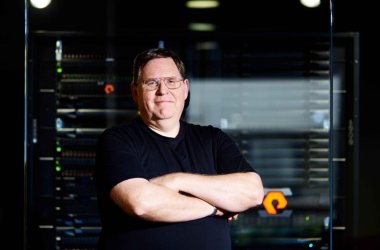Christopher Wellise, Chief Sustainability Officer at HPE explains why sustainability is no longer a nice to have, but a must have to drive innovation and business value.

Since its inception in the 1930’s, HPE has always been a pioneer of new technologies and cutting-edge innovations as part of its effort to deliver best-in-class products and services for its global customer-base.
The IT industry is extremely energy-intensive and accounts for 10 percent of the world’s electricity consumption, but HPE has firmly established itself as a real leader in terms of championing sustainability programs and initiatives.
The man tasked with the role of spearheading that campaign on behalf of the US company is Christopher Wellise, Chief Sustainability Officer at HPE.
We managed to secure an exclusive interview with the HPE executive onsite at the HPE Discover More event in a bid to find out more about its sustainability strategy, the future of data being created on the edge – and how the company is managed to sustain its success over such a long period of time in what it is becoming an ever increasingly competitive market.
Wellise is responsible for driving and developing Environment, Social and Government (ESG) strategy for HPE, and it sees him work directly with a multitude of stakeholders, investors and customers. His aim is to successfully integrate and embed their sustainability strategy across the value chain of the entire organisation.
However, there is a growing concern globally regarding climate change, and more and more governments and major companies are coming under increasing pressure to ‘do more’ to alleviate these issues. According to Wellise, there has been a shift in mindset and that sustainability is no longer an afterthought, it is now a necessity.
“Sustainability has evolved over time. It had roots in compliance a few years ago, but it has now really evolved from a nice to have, to a must have. It has become a real driver in innovation and business value,” says Wellise.
He added, “HPE identified early on that it was imperative that we integrated our sustainability strategy throughout the organisation, and it is ultimately my responsibility along my team to achieve this. In addition to this, we also work with customers to better understand what their needs are and linking what we do from a sustainability perspective to helping them to meet their goals and objectives.”
HPE’s chief sustainability officer also concedes that other industries look to the IT ecosystem for inspiration, so therefore it is critically important that major IT players known for their innovation show leadership in this area, but does he think they need to do more?
“I think the IT recognises that it has to show leadership, and in many cases a lot of companies are, but there is always more than can be done,” says Wellise.
He added, “I think the industry is ripe for huge disruption, and I believe one of those disruptions is going to be borne out of the fact that by 2025, most of the data will no longer be generated in the datacenter. It will instead be generated in what we call the edge, which is everything outside of the datacenter.”
The sustainability practitioner is clearly passionate and driven to ensure HPE has sustainability at the core of its overall strategy, and he pointed out that powering the intelligent edge will result in a huge reduction in energy consumption.
Wellise said, “By 2025, it has been projected that 75 percent of all the world’s data will be created at the edge. From an energy standpoint it requires an order of magnitude of more energy to transfer data that it does to process it.”
“If you’re able to bring compute to where the data is, as oppose to moving data to where the compute is then you’ve got huge energy savings implications, and your correcting for things like latency,” says Wellise.
The HPE executive also highlighted that if you’re on a smart factory floor where split second millisecond decisions need to be made because of the speed or level of production, then you need that intelligence there at the edge in order to do that, and that is also heavily behind their strategy as they move into the era of Industry 4.0.
The accumulation of data is skyrocketing and is expecting to grow exponentially over the next few years as more and more devices become connected. As a result, and with Moore’s Law going to be obsolete by 2025, the chief sustainability officer at HPE says we have to rethink our compute architecture to be able to cope with this explosion in data.
“If you examine the proliferation of data, the numbers are just astronomical. The latest statistic I read is that 2.5 quintillion bytes of data are now generated daily. In the past two years, 90 percent of all the data generated throughout history has been created, and it is just growing at a phenomenal scale,” says Wellise.
He added, “Part of that is obviously being fueled by the fact that every device is now connected. People are connected to people, and devices are connected to people and this is generating mass volumes of data. The need for sustainable IT is more important than ever, so how do you rethink sustainable IT infrastructure to handle this deluge of data at a time when Moore’s Law is coming to an end.”
The answer according to Wellise and HPE is a concept they’re calling memory-driven computing.
“We achieved all our advances through miniaturisation essentially until now, but with that coming to an end we really need to rethink compute architecture – and the scientists and engineers within Hewett-Packard labs are doing that and they’ve come up with a concept called memory-driven computing, says Wellise.
He went on to explain that memory-driven computing is basically pools of memory and agnostic chips and involves the process of moving from copper to fiber.
He concluded, “Push electrons through copper generates massive amounts of heat which requires cooling which consumes huge amounts of energy. One of the ways we’re looking to address this is the edge, that involves moving compute to where the data is, and the other is rethinking compute architecture.”





